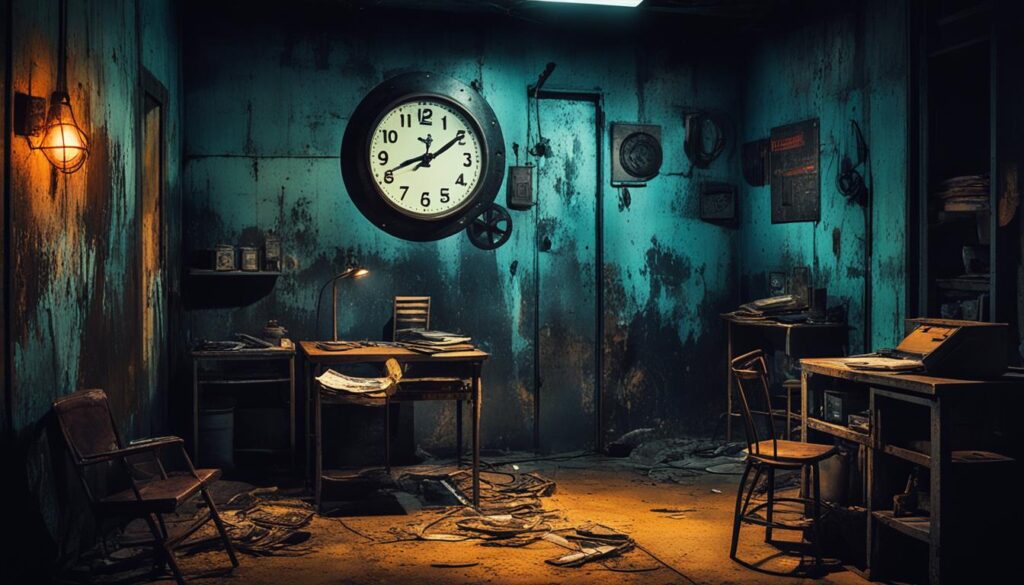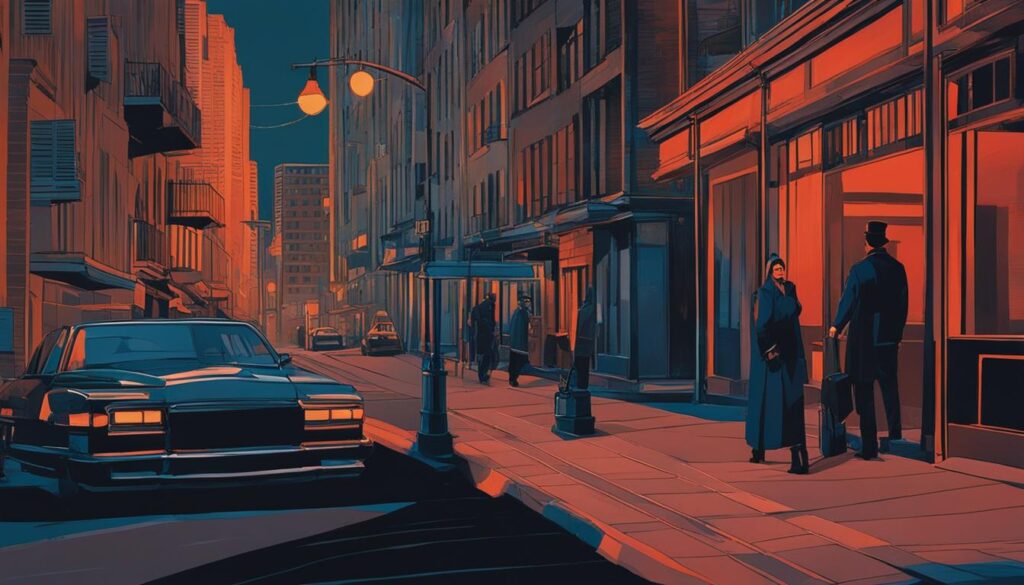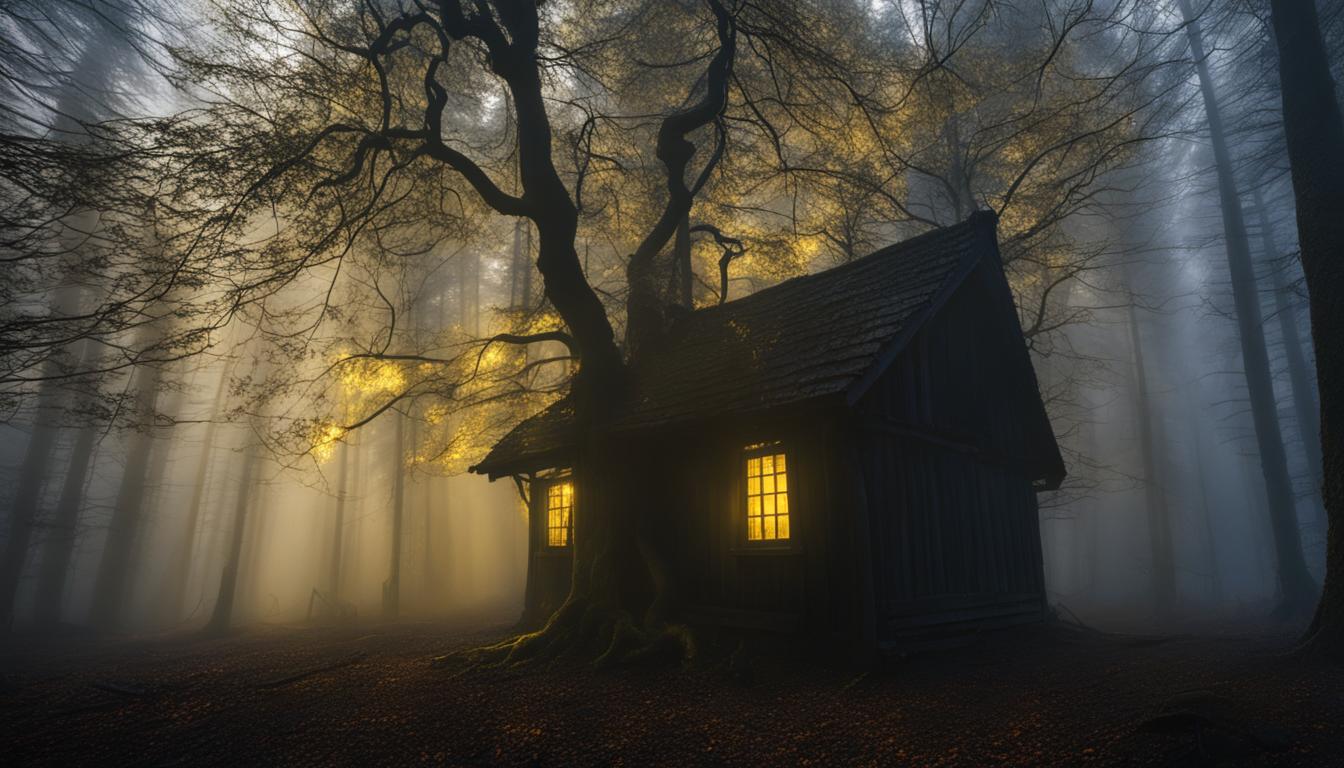Get ready to enter the twisted realm of one of the most influential and prolific authors of our time. Stephen King’s “The Night Shift” is a chilling collection of short stories that showcases his masterful talent for horror and suspense. From forgotten horrors lurking in the shadows to psychological terror lurking within the human mind, King’s stories have captivated readers for decades.
In this article, we’ll take a closer look at the origins, themes, characters, and impact of “The Night Shift,” and delve into the literary techniques employed to create such haunting tales. Join us on a journey into the night shift, as we explore the dark imagination of Stephen King and discover the stories that have kept readers up at night for generations.
The Origins of “The Night Shift” Collection
Stephen King’s decision to compile a collection of short stories in “The Night Shift” was inspired by his desire to showcase his earlier works that were previously published in various magazines. King aimed to provide a comprehensive, diverse collection that highlighted different themes and tropes of the horror genre.
The writing process for “The Night Shift” was no different from King’s usual routine. He wrote in the mornings and edited in the afternoons. However, writing short stories required a different approach, as each piece had to be complete in a limited number of words. King admitted that he struggled with writing effective short stories before he began working on “The Night Shift.
| Themes explored in “The Night Shift” | Featured Stories |
|---|---|
| Survival | “The Ledge,” “Quitters, Inc,” “The Lawnmower Man” |
| Revenge | “Children of the Corn,” “The Boogeyman,” “The Mangler” |
| Supernatural | “Jerusalem’s Lot,” “Night Surf,” “The Lawnmower Man” |
One of the unique aspects of “The Night Shift” is the wide range of characters and themes explored in each story. King’s collection features characters from all walks of life, exploring themes of nightmare creatures, science fiction, and a mix of various terrors that will keep the readers on edge.
The Ironic Title – “The Night Shift”
Initially, King’s intended to name his collection “Season’s Greetings” but later settled on the ironic title “The Night Shift” as an allusion to the graveyard shift and the nocturnal nature of the supernatural. The idea came to King when he was working the night shift at a laundromat during his college years.
Indeed, “The Night Shift” is a collection of tales that explores the darker side of humanity, filled with horrific creatures and daring protagonists facing sinister forces.
Unforgettable Characters in “The Night Shift”
Stephen King is renowned for his ability to create characters that readers can’t forget. The “Night Shift” stories are no exception. King brings to life a diverse cast of individuals, from the extraordinary to the ordinary, that will leave a lasting impression on readers.
One standout character is Richard Vickers from the story “The Lawnmower Man.” As the owner of a lawn care business, Vickers is known for using his trusty lawnmower to get the job done. However, things take a sinister turn when it becomes clear that Vickers may not be entirely human.
The story “Gray Matter” introduces readers to Henry, a man suffering from the effects of alcoholism. After consuming a can of contaminated beer, Henry begins to experience horrifying physical changes. The character’s downward spiral serves as a powerful commentary on addiction.
Other notable characters include the psychic protagonist of “The Boogeyman,” the vengeful ex-convict in “Quitters, Inc.,” and the brave soldiers in “Battleground.” King’s skillful characterization brings each of these characters to life in vivid detail, making them an essential part of the macabre and memorable world of “The Night Shift.”
Terrifying Themes Explored in “The Night Shift”
In “The Night Shift,” Stephen King ventures into the realm of horror like never before, exploring a range of chilling themes that leave readers both thrilled and unnerved. From supernatural occurrences to psychological terrors, “The Night Shift” pushes the boundaries of traditional horror and provides thought-provoking insights that linger long after the last page.
Supernatural Occurrences
Many of the stories in “The Night Shift” center around supernatural events that defy explanation. Perhaps the most notable of these tales is “The Mangler,” in which an industrial laundry machine takes on a life and will of its own. Similarly, “The Boogeyman” takes a classic childhood fear and brings it to terrifying life, while “The Ledge” pits a man against a supernatural force that threatens to push him over the edge.

Psychological Terrors
While supernatural occurrences may be the bedrock of horror, the true terror of “The Night Shift” often lies in the psychological realm. “Quitters, Inc.” takes a disturbing look at addiction and its impact on the mind, while “The Lawnmower Man” deftly blends the mundane and the macabre to create a truly unsettling experience. Meanwhile, “The Woman in the Room” explores themes of loss and grief in a way that will leave readers emotionally shaken.
The Inevitability of Death
“The Night Shift” also grapples with the inevitability of death and the fear that comes with it. In “The Last Rung on the Ladder,” a man reflects on his life and the death of his sister, while in “I Am the Doorway,” an astronaut grapples with a condition that threatens to consume him utterly. “One for the Road” confronts the idea of isolation in the face of death head-on, as a group of stranded travelers make a startling discovery in a remote corner of Maine.
Analysis of Key Stories in “The Night Shift”
Stephen King’s collection of short stories in “The Night Shift” showcases his unmatched ability to instill fear in his readers. By exploring some of the standout stories, we can gain insight into the literary techniques and themes that make King’s work so compelling.
“Children of the Corn”
The story of “Children of the Corn” follows a young couple who stumble upon a deserted town inhabited by a cult of children who sacrifice adults to a supernatural entity. This story highlights King’s ability to build tension and suspense, leading readers on a journey that becomes increasingly horrifying with each passing moment. Additionally, “Children of the Corn” explores themes of religious fanaticism and the dangers of blindly following charismatic leaders.
“The Boogeyman”
In “The Boogeyman,” King explores the psychological terror of a grieving father who believes that the titular monster has killed his children. By using a non-linear narrative and an unreliable narrator, King creates a sense of unease and uncertainty that keeps readers on edge until the shocking conclusion. This story also highlights King’s ability to use childhood fears to create adult horrors.
“Quitters, Inc.”
“Quitters, Inc.” is a satirical take on addiction, following a man’s attempt to quit smoking with the help of a shady organization. However, the methods used by Quitters, Inc. become increasingly extreme and dangerous, leading to a shocking twist ending. Through this story, King shows his ability to use horror to explore societal issues and provide biting social commentary.
| Story | Main Themes |
|---|---|
| “Children of the Corn” | Religious fanaticism, charismatic leaders |
| “The Boogeyman” | Childhood fears, psychology, unreliable narrator |
| “Quitters, Inc.” | Addiction, societal issues, social commentary |
Through his use of literary techniques such as foreshadowing, non-linear narratives, and unreliable narrators, Stephen King creates stories that stick with readers long after the final page is turned. Beyond their ability to scare, these stories also provide thought-provoking commentary on societal issues. It is no wonder that “The Night Shift” has had such a significant impact on the horror genre and continues to be a fan favorite.
Impact and Influence of “The Night Shift”
Stephen King’s “The Night Shift” is not just a collection of horror stories but has had a significant impact on the genre as a whole. The influence of these stories can be seen in numerous works of horror fiction, movies, and TV shows.
First published in 1978, “The Night Shift” marked a turning point in Stephen King’s career. This collection helped cement his reputation as one of the greatest horror writers of our time.
The impact of “The Night Shift” on the horror genre cannot be denied. With its blend of supernatural horror, psychological terror, and biting social commentary, these stories have helped redefine what horror can be.
As a result of the success of “The Night Shift,” Stephen King became a household name and continues to be one of the most influential and widely-read authors of our time. His work has helped shape the horror genre into what it is today.
Works of Horror Influenced by “The Night Shift”
| Work | Author/Director | Year Released |
|---|---|---|
| The Walking Dead | Robert Kirkman | 2010 |
| The Haunting of Hill House | Mike Flanagan | 2018 |
| Stranger Things | The Duffer Brothers | 2016 |
| The Exorcist | William Friedkin | 1973 |
As shown in the table above, “The Night Shift” has influenced numerous works of horror fiction, including popular TV shows like “The Walking Dead” and “Stranger Things,” as well as classic horror films like “The Exorcist.”
The social commentary found in “The Night Shift” has also had a significant influence, inspiring other authors and filmmakers to incorporate similar themes in their work. Whether it’s the dangers of nuclear war in “The Lawnmower Man” or the exploitation of the mentally ill in “The Night Shift,” Stephen King’s literary techniques have been emulated by other writers and directors.
Overall, the impact and influence of “The Night Shift” on the horror genre cannot be overstated. Stephen King’s unique blend of horror, suspense, and social commentary has set a high standard for the genre and will continue to inspire generations of horror fans and creators.
Critical Reception of “The Night Shift”
Stephen King’s “The Night Shift” has received critical acclaim and cemented his status as one of the most talented horror writers of our time. The collection has left a lasting impact on readers and critics alike, showcasing King’s unique ability to craft tales that are both terrifying and thought-provoking.
Over the years, “The Night Shift” has garnered numerous accolades and positive reviews from literary critics. The New York Times praised the collection, stating that “King’s prose is like a powerful current that pulls the reader inexorably along, never letting go until the story’s explosive climax.” (keywords: “Critical reception of The Night Shift”)
The stories in “The Night Shift” have also been the subject of academic analysis, with scholars examining the themes and literary techniques used by King to create his masterpieces. The collection has been praised for its exploration of the human psyche and its ability to question societal norms and values.
| Publication | Review |
|---|---|
| Entertainment Weekly | “King’s gift of storytelling is abundantly clear in this stellar collection of short stories.” (keywords: “Critical reception of The Night Shift”) |
| The Guardian | “Compelling and imaginative, this collection of stories showcases King’s talent and sets a new standard for horror writing.” (keywords: “Critical reception of The Night Shift”) |
| Booklist | “King’s ability to make the supernatural seem plausible and the mundane seem eerie is on full display in this unforgettable collection.” (keywords: “Critical reception of The Night Shift”) |
Of course, not all reviews have been positive. Some critics have questioned the graphic nature of the stories and the gratuitous violence they contain. However, most agree that “The Night Shift” marks a turning point in King’s career, establishing him as a master of the horror genre and paving the way for future classics.

Themes of Social Commentary in “The Night Shift”
Stephen King’s “The Night Shift” is not just a collection of horror stories. Through the use of horror elements, King explores social issues and commentary that are still relevant today. These deeper themes offer a thought-provoking analysis of the human condition, making the collection a standout in the genre.
One example of social commentary in “The Night Shift” is the story “Graveyard Shift,” which examines the theme of exploitation and class struggle. The characters work in a textile factory, where they are required to clean the basement, an area filled with rats and dust. Through their conversations, readers can sense their dissatisfaction with their working conditions and the low pay. This story sheds light on the plight of the working class and the exploitation that takes place in many workplaces.
Another example is the story “The Ledge,” which explores themes of prejudice and racism. The main character is ordered to walk around the ledge outside of a building to prove his love to the daughter of a powerful wealthy man. The wealthy man does not believe that the main character, a poor athlete, is worthy of his daughter. This story confronts the topic of racial profiling and the biased attitudes of social classes, provoking readers to question their assumptions and beliefs.
Stephen King’s masterful blend of horror and social commentary shines through in “The Night Shift.” As readers absorb these stories, they are forced to think about social issues and the world around them, making them truly unforgettable.
Literary Techniques Employed in “The Night Shift”
In “The Night Shift,” Stephen King employs various literary techniques to create tension, suspense, and emotional impact. One of the most effective techniques he uses is foreshadowing, where he drops subtle hints and clues throughout the story to build anticipation for what’s to come. This can be seen in “The Boogeyman,” where the protagonist’s fear of closets foreshadows the reveal of the antagonist.
King also employs non-linear narratives to keep the reader engaged and guessing. “Trucks” is a prime example of this, where the story jumps between past and present as the characters are trapped in a gas station under attack from sentient trucks.
Another technique King uses is vivid imagery and sensory details. In “Night Surf,” King evokes a hauntingly beautiful picture of a world ravaged by a deadly virus, while in “Mrs. Todd’s Shortcut,” he describes the sensation of driving at high speeds in a way that feels both exhilarating and dangerous.
Overall, King’s literary techniques elevate “The Night Shift” stories beyond mere scares and shocks, creating a lasting impact on readers.
Conclusion
In conclusion, Stephen King’s “The Night Shift” remains a hallmark of horror literature. Through this collection, King demonstrates his unmatched ability to craft terrifying tales that linger in the imagination long after they’ve been read. From exploring the horrors of the supernatural to delving into the depths of human psychology, “The Night Shift” offers a diverse range of themes that continue to captivate readers to this day.
King’s unforgettable characters continue to resonate with audiences, as do his thought-provoking social commentaries. By employing a range of literary techniques, from foreshadowing to non-linear narratives, King creates tension, suspense, and emotional impact that will keep readers on the edge of their seats.
The impact of “The Night Shift” on the horror genre and popular culture at large cannot be overstated. It has inspired countless authors and filmmakers, and continues to be celebrated as a seminal work of horror. Whether you’re a long-time fan or discovering these stories for the first time, “The Night Shift” promises to leave you haunted and thrilled.
So, embrace the darkness and enter Stephen King’s world of “The Night Shift.” You won’t emerge unscathed, but you’ll emerge with a newfound appreciation for the power of horror storytelling at its finest.



